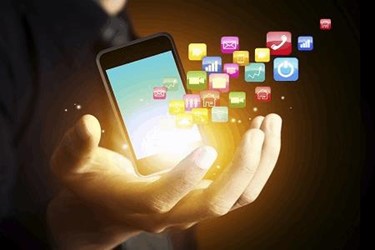Why Retailers Are Shifting To Mobile-First Communication

By Taylor Pack, VP, Customer Development, Branch Messenger
There are many factors behind the shift retailers are experiencing in how they are expected to communicate with their workforce — factors suggesting mobile is the preferred method. First, there has been a tremendous influx of millennials entering the workforce in recent years. Their work style has been heavily influenced by the fact they are the first generation to grow up with technology, computers, and smartphones as part of their everyday lives.
Second, customers are turning to their mobile devices for additional information to assist them in choosing products. They expect associates to be knowledgeable about the retailer’s mobile shopping experience. Third, employees are increasingly asking the companies they work for to be transparent and for opportunities to collaborate as they care more about working as a team to reach a common goal. Finally, legacy systems based in the analog world are shifting to the digital world. Let’s take a closer look at each of these trends:
- Millennial Workers: Millennials are accustomed to using technology to make things easier, faster, and more efficient. Immediate access to information and instant feedback are necessities for millennial workers. They don’t want to carry multiple devices or learn multiple user interfaces, they just want to use their own smartphones. Millennials expect resources to be available digitally.
- Customer Expectations: Customers are using their mobile devices in stores to browse for products on the Internet, view reviews of the products they see in stores, and check for the lowest prices. They expect retailers to have a mobile presence so they can easily match products on their phones to those they see in stores. It is also important to customers that associates are able to provide assistance when they are shopping from their mobile devices in stores.
- Transparency And Collaboration: Employees are demanding transparency within organizations. They care about the inner workings of the companies they work for and want to make sure they are being treated fairly. Collaboration is important to employees because they see it as a way to get their work done quicker and more efficiently.
- Legacy Solutions Aren’t Nimble: Employees would rather not have to track down or call their manager every time they have a question or need to make a schedule change. There are better, digital ways to communicate work schedules and important company announcements than via paper pinned to a board in the break room. Company intranets are even starting to become outdated as mobile apps and chatbots are answering company-related (HR) questions for employees.
There are still a few key hurdles retailers will need to overcome in order to fully adopt mobile-first communication with their workers. In-store Wi-Fi is pretty much mandatory if retailers expect their workers to have constant access to information on their mobile devices. Cellular network service is oftentimes spotty in large retail stores and they will want to avoid having their employees use up their data plans while at work.
Another hurdle is gaining buy-in from older, less tech-savvy employees who might not own a smartphone. When this becomes an issue, offering company-owned devices to these employees at work is a great solution. Finally, probably the largest hurdle retailers face when adopting mobile-first communication is the need to loosen company policies regarding phone usage while at work and the security requirements of the devices that are allowed to access certain types of company information.
Once a retailer decides it needs to adopt a mobile-first communication strategy and overcomes the hurdles blocking a full rollout, next comes determining the types of communication that need to happen on mobile devices and how they will happen. One of the most common ways communication happens on mobile devices is via applications. There are applications for nearly any type of communication necessary for retail workers: scheduling, swapping shifts, private messaging, and answering company-related questions (HR).
Asking employees directly how they would prefer to communicate and which applications they might already be using on their own for work is a great first step in determining which applications might work best company-wide.
